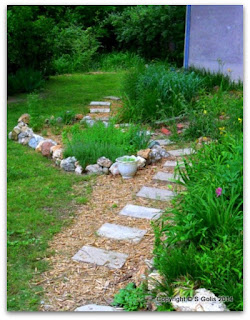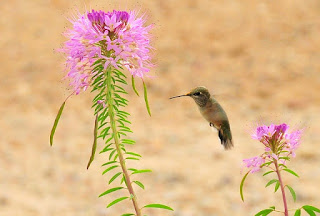When
it comes time to planting I always plan an area in my yard for annual
and perennial flowers that attract hummingbirds. Both my husband and
I enjoy watching these birds that come to feed off our flowers. Know
that the best way to attract hummingbirds to your yard is to provide them
with their dietary needs and a reliable water source. Then the
hummingbirds will visit your yard and gardens daily.
Photographs of hummingbirds in the flower garden
Hummingbirds
are particular about their flowers as they need flowers that are rich
in sugar content and will reject other plants. They will also look
for gardens that have insects as they need to nourish their bodies
with nutrients.
Decide
on the nectar-rich plants that you want to grow Buy a variety
of flowers that
will bloom throughout the summer months.
Here
are a few of my favorite flowers that attract hummingbirds.
Asters,
Autumn Joy Sedum, Asiatic lilies,
Cardinal flower (red), Chives, Chrysanthemum,
Dandelion Dill
herb,
Echinacea Coneflowers,
Four O'clock flowers, Garden Mint,
Happy returns day lily,
Lavender, Lemon Balm, Lilacs,
Marigold,
Milkweed Mimosa, Parsley, Peony, Purple Phlox,
Red and Fuchsia Bee
Balm, Sage, Sweet Pea,
Sweet Autumn Clematis, Thyme, , Verbena,
Yarrow, and
Zinnias.
You can buy an orange trumpet vine at ebay.com and attract hummingbirds to your yard.
Helpful
Tips
Keep
hummingbirds in your yard and garden by installing a bird bath or water fountain. Change out the water daily to make sure that it is fresh.
Do not use chlorinated water in the fountain, instead collect rainwater for your water fountain. You can also use filtered water.
Provide
the hummingbirds with an organic environment by refraining from
treating your yard and gardens with chemical-based insecticides as
these chemicals will poison the hummingbirds and kill off their
insect food source.



















